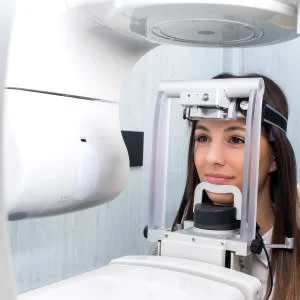A recent study evaluated whether a 3D camera can outperform highly trained technicians in optimising patient position and reduce patient exposure.
In this study, 3118 patients underwent computer tomography (CT) scans of the chest and/or abdomen on a single-source CT scanner outfitted with a 3D positioning camera.
Patients were split into two groups; one group was positioned with guidance from the 3D camera and the other group was positioned with laser guidance.
The researchers compared positioning accuracy relative to the scanner’s iso center, as well as radiation parameters,including effective dose, organ doses, CT dose index, and dose length product.
Reportedly, the iso center positioning improved greatly with guidance from the 3D camera.
The absolute table height differed between the two guidance options: with the 3D camera positioning the bed was higher (165.6 ± 16.2 mm) compared with laser-guided positioning (170.0 ± 20.4 mm). Deviation of 4cm results in increased dose by up to 20%, which indicates that using the 3D camera leads to decreased radiation exposure.
Although laser lines projected on patients help to adjust table height in all clinical CT scanners, visual positioning is still user dependent.
Using the 3D camera, the findings showed that exposure to radiation-sensitive organs like the colon and red bone marrow was discovered to be less.
The authors concluded, “Implementation of a 3D camera improves and homogenizes patient positioning for common CT examinations (chest, abdomen, and pelvis) which “results in a lower and also better-balanced dose reduction for the patients”.
Source: Investigative Radiology
Image Credit: iStock
References:
Manava, P et al. (2023) Optimized Camera-Based Patient Positioning in CT: Impact on Radiation Exposure. Investigative Radiology. 58(2):126-130






